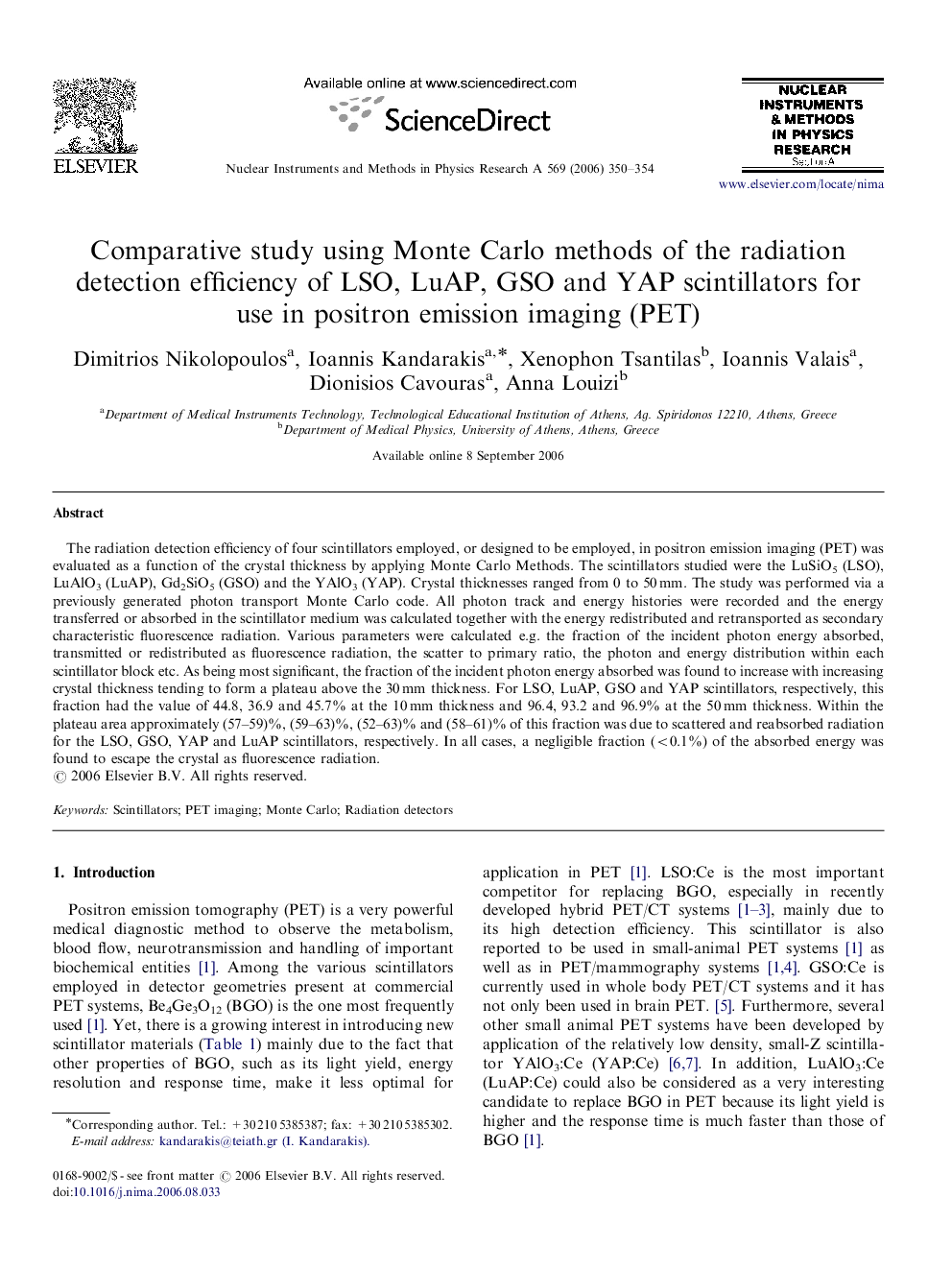| کد مقاله | کد نشریه | سال انتشار | مقاله انگلیسی | نسخه تمام متن |
|---|---|---|---|---|
| 1832332 | 1027517 | 2006 | 5 صفحه PDF | دانلود رایگان |
عنوان انگلیسی مقاله ISI
Comparative study using Monte Carlo methods of the radiation detection efficiency of LSO, LuAP, GSO and YAP scintillators for use in positron emission imaging (PET)
دانلود مقاله + سفارش ترجمه
دانلود مقاله ISI انگلیسی
رایگان برای ایرانیان
کلمات کلیدی
موضوعات مرتبط
مهندسی و علوم پایه
فیزیک و نجوم
ابزار دقیق
پیش نمایش صفحه اول مقاله

چکیده انگلیسی
The radiation detection efficiency of four scintillators employed, or designed to be employed, in positron emission imaging (PET) was evaluated as a function of the crystal thickness by applying Monte Carlo Methods. The scintillators studied were the LuSiO5 (LSO), LuAlO3 (LuAP), Gd2SiO5 (GSO) and the YAlO3 (YAP). Crystal thicknesses ranged from 0 to 50Â mm. The study was performed via a previously generated photon transport Monte Carlo code. All photon track and energy histories were recorded and the energy transferred or absorbed in the scintillator medium was calculated together with the energy redistributed and retransported as secondary characteristic fluorescence radiation. Various parameters were calculated e.g. the fraction of the incident photon energy absorbed, transmitted or redistributed as fluorescence radiation, the scatter to primary ratio, the photon and energy distribution within each scintillator block etc. As being most significant, the fraction of the incident photon energy absorbed was found to increase with increasing crystal thickness tending to form a plateau above the 30Â mm thickness. For LSO, LuAP, GSO and YAP scintillators, respectively, this fraction had the value of 44.8, 36.9 and 45.7% at the 10Â mm thickness and 96.4, 93.2 and 96.9% at the 50Â mm thickness. Within the plateau area approximately (57-59)%, (59-63)%, (52-63)% and (58-61)% of this fraction was due to scattered and reabsorbed radiation for the LSO, GSO, YAP and LuAP scintillators, respectively. In all cases, a negligible fraction (<0.1%) of the absorbed energy was found to escape the crystal as fluorescence radiation.
ناشر
Database: Elsevier - ScienceDirect (ساینس دایرکت)
Journal: Nuclear Instruments and Methods in Physics Research Section A: Accelerators, Spectrometers, Detectors and Associated Equipment - Volume 569, Issue 2, 20 December 2006, Pages 350-354
Journal: Nuclear Instruments and Methods in Physics Research Section A: Accelerators, Spectrometers, Detectors and Associated Equipment - Volume 569, Issue 2, 20 December 2006, Pages 350-354
نویسندگان
Dimitrios Nikolopoulos, Ioannis Kandarakis, Xenophon Tsantilas, Ioannis Valais, Dionisios Cavouras, Anna Louizi,